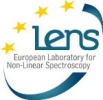
The study of the mechanisms which drive the energy transport through interacting systems plays a crucial role both to improve the process of transferring quantum or classical information across complex networks and to explain the high efficiency (above 95%) of the excitation transfer through a network of chromophores in photosyntetic systems. Recently, in many theoretical works the noise has been found to play a positive role in assisting the transport of energy and information. In certain circumstances, the presence of noise can lead to the inhibition of destructive interference and to the opening of additional pathways for excitation transfer, with a consequent increase of the transport efficiency.
The main goal of the experiments is the development and the realization of an experimental setup, based only on fiber optic components at telecom wavelengths (1550 nm), which can simulate some transport mechanisms in complex networks. In particular, the simulator must be able to reproduce the effects of noise assisted transport. The setup must be supplied with controllable and detectable parameters, the geometry must be easily variable and scalable, and a controlled amount of noise must be able to be inserted into the apparatus. Differently from what can be done with real biological samples, a purely optical setup has the remarkable advantage of allowing a complete control over all the fundamental system parameters. Such a simulator can be used both as control test to verify noise assisted transport models and to investigate the system response when network parameters and noise are changing, in order to find out the best network characteristics and topology to increase the transport efficiency.
These results point toward the possibility for designing optimized structures for transport assisted by noise, that might be used for future and more efficient solar energy technologies.


